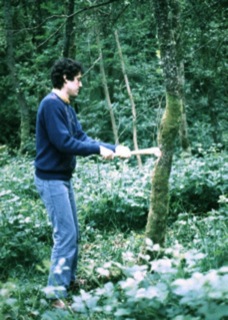
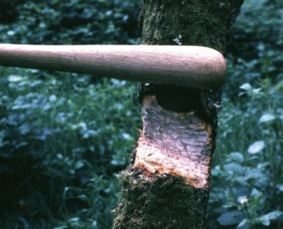
In this experiment three trees of the size illustrated were chopped down in about 20 minutes, demonstrating the efficiency of such ground stone axes.
Use-wear analysis of the axe demonstrated that there was no edge damage to the axe whatsoever. Also no microscopic 'polish' was evident, but this was not unexpected because the axe was already 'polished' from the process of manufacture and therefore could not be 'polished' any further by use.
The absence of any fractures on the edge of the axe would indicate that the advantage of ground stone axes over flake axes is that the edge will not fracture so easily and thus provide a longer lasting tool which would require less 'maintenance'
The general impression from this experiment was that the axe was very efficient and would have enabled relatively rapid forest clearance.
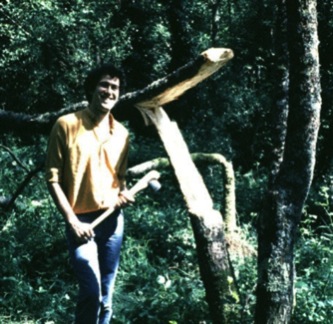
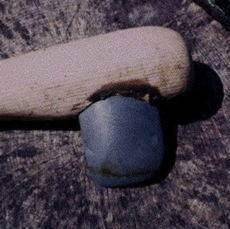
Such residue however, is very unlikely to be preserved on archaeological tools, except on sites where wood is preserved, usually on waterlogged sites. The residue was easily removed by biological cleaning.
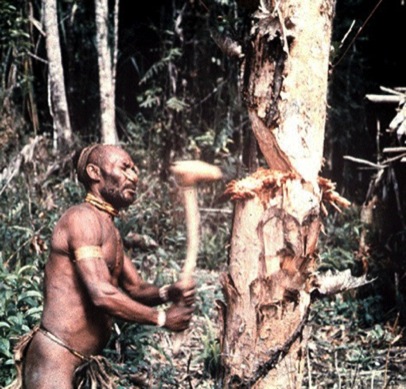
ethnographic use of polished stone axes